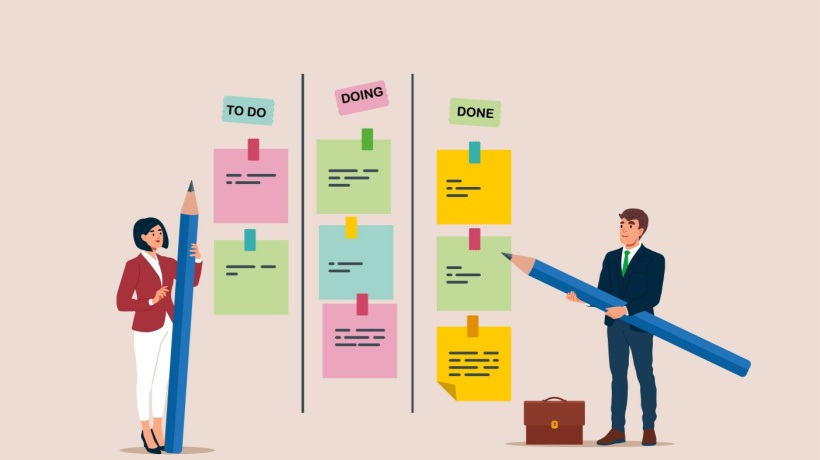4 Core Principles In eLearning
A lot of L&D teams have adapted the iterative approach to developing courses. It enables them to design eLearning courses that have better business value and have a more positive impact on the outcome. Below are the 4 core principles of agile from the Agile Manifesto and some examples that describe the importance of these principles, which have revolutionized the way eLearning development teams make courses.
1. Individuals And Interactions Over Processes And Tools
If the developers determine after interacting with the client that some different tools will be better and/or there need to be some changes in the existing developmental process, it should be prioritized. Adhering to a legacy process, even though it has proved to be successful in the past and the new project clearly has different needs is not agile.
The first principle of agile puts the focus on communication between different members of the development team, SMEs, clients, and external stakeholders. This helps the developers determine which path will help them reach their goal quicker.
For example, if your organization has been using tool A for a specific purpose, but now for a new project you feel tool B is more suitable, you should switch. Processes and tools are important for building an eLearning course. However, at the end of the day, they come second to the actual needs and requirements of the team, which are decided by discussions.
2. Working Software Over Comprehensive Documentation
“Software” means a product in general, which is an eLearning course in this case.
Rather than spending a lot of time creating lengthy and detailed documents, which no one really reads, focus on creating something that is of value to the user. If an eLearning course is created in a way that is really knowledge-rich but doesn't address the problem which the course is targeted to solve, it is not agile.
For example, if a user has to put a lot of effort into getting the reward, it is not a good product. If a learner has to go through too many modules to solve a simple problem, the eLearning course is not efficiently designed. The amount of effort put in by a learner should be proportional to the magnitude of the problem that they are trying to solve.
3. Customer Collaboration Over Contract Negotiation
Rather than mulling over the "terms of engagement" ask your client what they want first. Giving more priority to the customer's needs over the financial or business elements of the interaction will help any L&D team become more agile.
Contracts will always be a part of a business transaction. However, it must not stop the eLearning developers from collaborating with their clients so that they can create a course that is better suited to the clients' needs.
4. Responding To Change Over Following A Plan
This principle of agile advises not to move forward no matter how much development has been completed if new information suggests that the course is not going to yield the desired results.
For example, if the first few review cycles inform you that a product is not going to fare well if made that way, there is a need to pivot. Understanding the change in users’ mindset and behavior and morphing the product into what they actually want is more agile. It makes the product more useful.
Agile has a set of principles that will guide you and your team to achieve a better product-market fit for your eLearning course, which will get the desired results in terms of both knowledge and output. One of the important things to keep in mind is that there are no specific steps or processes to implement agile in eLearning development. The steps to attain agility in eLearning development are unique to each team, client, course, and organization. It is also to be understood that there is no "one-size-fits-all."
Summing Up
The above set of examples could be used to understand the principles of agile in terms of eLearning. It can help L&D professionals become more agile and build qualitative eLearning courses faster. In order to get the desired results or effect on the outcome, it is crucial to adopt agile.
There are no specific set of steps to magically make an eLearning course development process completely agile. Like the principles of agile, the adoption of the same comes through constant iteration and a lot of learning. Trying and experimenting with new ideas and strategies, and adapting with time, based on external feedback, is a great way to start the transition to agile.









